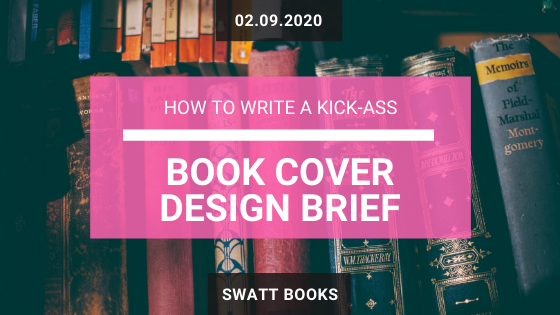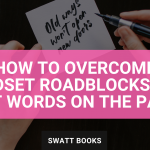Aside from writing a good quality book, having a professional eye-catching book cover is of paramount importance to publishing a successful book. But if you’re not very artistic or creative, how can you get a cover that does its’ job of selling your hard work for you? You hire a professional to design it for you!
The problem is that many first-time authors have never had the experience of dealing with professional designers before. They don’t know how to best convey the ideas in their head to someone else in such a way as to allow them to see what they see. Enter the Book Cover Design Brief. Every designer worth their salt will insist on having one, and even the majority of the only crowdsourcing platforms like 99Designs and Fiver make it part of their job listing process.
This article is going to look at what goes into writing a great book cover design brief that will ensure you and your designer are on the same page, and they have the information they need to design a kick-ass book cover that will make your book shine.
What is a Book Cover Design Brief?
First things first, just in case you’ve not heard the term ‘design brief’ before, it is a document that details everything a designer needs to know about your book for them to design a suitable cover for it. It touches on things like specifications, text, images and ideas, but also gives them an insight into what the book is all about and who your target reader is.
Anyone with a copy of Photoshop can design a pretty looking book cover, but if it doesn’t relate to the content inside or doesn’t capture the attention of the specific audience it is intended for, then it’s nothing more than a pretty picture. That’s the purpose of a Book Cover Design Brief; to give the designer the information needed to make that pretty picture relevant.
What Should a Book Cover Design Brief Include?
Four main areas make up a good book cover design brief:
- Specifications
- Content
- Background
- Creative Direction
Let’s go into more detail on how to approach each section.
Specifications
This section covers the basic technical and physical specifications of your book. It should include things like:
- Trim size
- Binding type (paperback, casebound hardback, or jacketed hardback)
- Spine width (you will probably have to estimate this to start with, but can finalise it once you have a definitive page count)
- Cover finish (gloss or matte)
You also want to give the designer an indication of how the cover is going to be produced. Are you going to be taking it to a traditional printer to produce a print run of hundreds of copies, or will you be publishing using a Print on Demand model? If you’re going to go down the print on demand route, your designer will need to know which platform(s) you will be using to ensure that the files they produce are technically compliant.
Content
This section provides all the details of the actual content that needs to be included on the cover. Don’t forget that this needs to take into account the back cover and spine as well as the front cover. It should include:
- Main title
- Subtitle (if applicable)
- How you want your author name to appear (including any designations that need to appear after your name)
- Back cover blurb
- Short author bio for the back cover (not required, but is a good idea to include if you have space)
- ISBN barcode (if you don’t have one yet, be sure the designer knows to allocate space for it)
- Publisher name and icon (again not mandatory, but gives your book a more professional look)
- Any additional text that you want to include (for example a one-line review, or accolade)
You should also give some thought to any images that you definitely want to be included on your book cover. This typically includes an author headshot if you’re having one and if some particular graphics or logos need to be included. Be sure that you have permission to use any images and that you are sending your designer the highest possible resolution of those images. A good rule of thumb for photographs is the larger the file size the higher the resolution.
Background
This section is less about how your book cover is going to look and more about the intention and purpose of your book. It should include:
- A bit of background on what your book is about
- What the purpose of your book is and what you expect readers to do/feel/learn once they’ve read it
- A brief description of who your target audience is (I have a blog article that talks all about how to determine your ideal reader that you can read here if you need help)
When describing your ideal reader, be sure to include both who they are and what they are. Think about things like general and socio-economic demographics, but also interests, pain points and common traits. All of this will help your designer to get into the head of your target audience and make design decisions that will appeal directly to them.
Creative Direction
This final section is where you give your designer a bit of initial direction and guidance. There are no hard and fast rules about what you need to include here, but I suggest thinking about:
- What you like and don’t like
- If there are any branding guidelines in terms of fonts or colours that need or you want to be incorporated
- If you have a particular idea for what you want your cover to look like, try to describe it as best as possible (even consider drawing out a rough sketch)
- Give examples of other book covers that you like the look of
- Think about what types of design styles would be appropriate for your cover (i.e. minimalist, fun, bold, luxurious)
If you don’t have any particular images that you need your designer to incorporate, but want to explore the idea of using imagery, let them know whether you are open to the idea of using stock images or not. If so, give them an indication as to how much budget you have for the purchase of stock images. Also, give them an indication as to whether you prefer those images to be photographic or illustrative.
Likewise, if you don’t want to use any imagery on your cover, be specific in telling your designer to work with text only.
Benefits of a Good Book Cover Design Brief
The benefits that you get from writing a good book cover design brief far outweigh the time and thought process it takes to get it right. Providing your designer with a clear, concise, and details book cover design brief means that you will be far more likely to get a book cover that you not only will love but will make your job of marketing and selling your book that much easier.
Though it flies in the face of the age-old saying “don’t judge a book by its cover”; that is precisely what readers will be doing with your book if they have not heard of you before. So it is well worth the time and investment to get it right.
One final thought that I want to leave you with…
On the odd occasion, I have heard authors say that this process of writing a book cover design brief sounds counterproductive. I even heard one author go so far as to say, ‘If I have to explain everything that I want and don’t want, I might as well do it myself’. There are two main reasons why that is just not the case.
- As talented as professional graphic designers are, they are not telepathic. They cannot see the image that you have in your head. If you want to have any hope of getting what you want out of the process of working with a designer, you need to communicate what you want and don’t want.
- No self-respecting graphic designer is just going to blindly copy what you tell them you want to see. They will draw on their training and understanding of design theory, layout, colour psychology and typography to take your ideas and refine them into a professional piece of design that is fit for purpose.
I hope you have found that insight useful for when it comes time for you to write your first (or next) book cover design brief. If you want some more advice on effective book cover design, check out my blog article “5 Keys to a Killer Book Cover”, or you can arrange a 1 to 1 consultation with me to discuss your book and it’s cover by clicking over to my Online Diary and booking a Digital Coffee.





